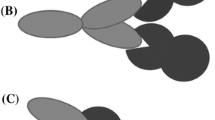Abstract
The approach presented enables a model independent representation of the pharmacokinetics of drugs with a linear disposition and some drugs with a nonlinear disposition. The approach is based on a decomposition of the drug disposition into an elimination function q(c) and a distribution function h(t). The qfunction represents the net effect of all disposition processes which work toward a reduction in the systemic drug level. The hfunction represents the net effect of all disposition processes which slow down the rate of decline of the systemic drug level by returning drug from the peripheral environment to the systemic circulation. Several theorems relating qand hto the drug disposition are presented which uniquely define these functions mathematically. The disposition decomposition is of particular significance in three main areas of pharmacokinetics: (1) evaluation of drug absorption, (2) drug level predictions including steady state predictions, and (3)elucidation of drug disposition kinetics. The practical significance of the decomposition method in these three areas is discussed, and various procedures for the application of the method are proposed. The decomposition method represents a model independent alternative to pharmacokinetic models such as linear compartmental models, the recirculation model, and some physiologic models. This also includes nonlinear forms of such models, as long as the nonlinearity is due to a central nonlinear elimination. The greatest promise and significance of the disposition decomposition approach appears to be its application to nonlinear pharmacokinetics. In contrast to linear pharmacokinetics the kinetic analysis in such cases has been limited to model dependent methods employing specific pharmacokinetic models, due to the lack of model independent alternatives. The novel development presented offers such alternatives. For some applications these alternatives appear more rational in the sense that the analysis becomes more general and objective and may be based on fewer assumptions.
Similar content being viewed by others
References
D. Cutler. Linear system analysis in pharmacokinetics.J. Pharmacokin. Biopharm. 6:265–282 (1978).
D. Cutler. A linear recirculation model for drug disposition.J. Pharmacokin, Biopharm. 7:101–116 (1979).
J. L. Stephenson. Theory of transport in linear biological systems: I, fundamental integral equation.Bull. Math. Biophys. 22:1–17 (1960).
B. M. Brown.The Mathematical Theory of Linear Systems. Chapman and Hall, London, 1965, p. 168.
H. Hockstadt.Integral Equations. Wiley, New York, 1973, p. 31.
P. Veng-Pedersen. General treatment of linear pharmacokinetics.J. Pharm. Sci. 67:187–191 (1978).
K. B. Bischoff, R. L. Dedrick, and D. S. Zaharko. Preliminary model for methotrexate pharmacokinetics.J. Pharm. Sci. 59:149–153 (1970).
K. L. Zierler. Circulation times and the theory of indicator dilution methods for determining blood flow and volume. In W. F. Hamilton (ed.),Handbook of Physiology, Section 2: Circulation, Vol. 1. American Physiological Society, Washington, D. C., 1962, pp. 585–615.
C. Waterhouse and J. Keilson. Transfer times across the human body.Bull. Math. Biophys. 34:33–44 (1972).
R. Gugler, C. V. Manion, and D. L. Azarnoff. Phenytoin; pharmacokinetics and bioavailability.Clin. Pharmacol. Ther. 19:135–143 (1976).
H. B. Kostenbauder, R. P. Rapp, J. P. McGovren, T. S. Foster, D. G. Perrier, H. M. Blacker, W. C. Hulon, and A. W. Kinkel. Bioavailability and single-dose pharmacokinetics of intramuscular phenytoin.Clin. Pharmacol. Ther. 18:449–456 (1975).
L. Martis and R. H. Levy. Bioavailability calculations for drugs showing simultaneous first order and capacity limited elimination kinetics.J. Pharmacokin. Biopharm. 1:283–294 (1973).
W. J. Jusko, J. R. Koup, and G. Alvan. Nonlinear assessment of phenytoin bioavailability.J. Pharmacokin. Biopharm. 4:327–336 (1976).
L. M. Delves and J. Walsh.Numerical Solution of Integral Equations. Clarendon press, Oxford, 1974, pp. 140–158.
P. Veng-Pedersen. An algorithm and computer program for deconvolution in linear pharmacokinetics.J. Pharmacokin. Biopharm. 8:463–481 (1980).
P. Veng-Pedersen. Model-independent method of analyzing input in linear pharmacokinetic systems having polyexponential impulse response I: theoretical analysis.J. Pharm. Sci. 69:298–305 (1980).
P. Veng-Pedersen. Curve fitting and modeling in pharmacokinetics and some practical experiences with NONLIN and a new program FUNFIT.J. Pharmacokin. Biopharm. 5:513–531 (1977).
P. Veng-Pedersen. Pharmacokinetic analysis by the linear system approach I. Cimetidine bioavailability and the second peak phenomenon.J. Pharm. Sci. 70:32–38 (1981).
G. Dahlquist and A. Björk.Numerical Methods. Prentice Hall, Englewood Cliffs, N.J., 1974, p. 359.
Author information
Authors and Affiliations
Rights and permissions
About this article
Cite this article
Veng-Pedersen, P. Theorems and implications of a model independent elimination/distribution function decomposition of linear and some nonlinear drug dispositions. I. Derivations and theoretical analysis. Journal of Pharmacokinetics and Biopharmaceutics 12, 627–648 (1984). https://doi.org/10.1007/BF01059557
Received:
Revised:
Published:
Issue Date:
DOI: https://doi.org/10.1007/BF01059557




